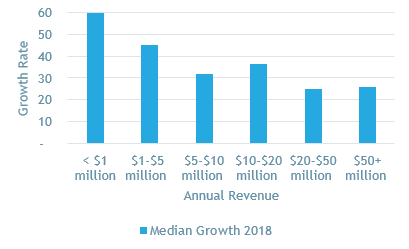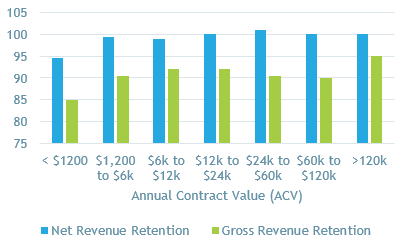Preparing a SaaS Company for a Capital Raise
November 1, 2018
Raising capital can be a challenging, sometimes grueling, process. In the last 20+ years, I have seen how the sausage is made from many different perspectives.
Prior to starting SaaS Capital in 2007, I was a partner at a venture capital firm with a focus on funding Series A and B for software companies. It was there that I saw the specific challenges early-stage businesses face. Since creating SaaS Capital to focus exclusively on B2B SaaS businesses, I’ve now had the opportunity to speak with thousands of SaaS founders and company executives and see the specific challenges SaaS businesses face when raising money.
I have also been on the “other side” of the table, raising a series A venture round in 2007, and most recently raising $75 million for our third fund, so I fully appreciate the hurdles on the fundraising side.
Last week, I had a chance to talk about this with Tim McCormick, the CEO of SaaSOptics, a leading subscription management platform. Below are some of the highlights of what we discussed in our webinar (see links at the bottom for the slides, recording, and additional resources).
The overriding theme in our advice is to streamline the company information and put it in a format an investor can quickly digest – this includes both your “numbers” and your “story.”
Your Story: be Clear and Concise
Most investors are exposed to hundreds of opportunities per year, so the quicker a potential investor understands what your company does, the more interest they will have. Too often, we see aspirational descriptions (complete with non-transparent jargon) that may sound good in marketing collateral but don’t give a clear explanation of what your company does. Below is an edited version of a business plan that is literally sitting on my desk right now.
“We are a global technology company transforming the way large corporations and their thousands of suppliers process payments. We unlock hundreds of millions of dollars in value while improving efficiency and delivering total visibility through WAS.”
A better description is this:
“We provide workflow software that streamlines invoicing and payment processing for large companies.”
Your Financials: Follow Industry Norms
As with the description of what your company does, you want to present your financials in a standard format that makes them easy to digest. The following SaaS P&L statement is a commonly used format your potential investor will immediately recognize.

When constructing your P&L presentation, consider the following:
- Break out recurring vs. non-recurring revenue
- Break out services from licensing revenue and their respective COGS
- Avoid one simple expense line called “salaries”
- Customer Success may need to be split between COGS and Sales
- Do not capitalize software development expenses (fight the auditors on this one)
- Move to GAAP when over $3 million in revenue and/or billing in advance
Your Metrics: Understand How You Compare to Your Peers
 Most equity investors will focus on your revenue growth rate, so you need to not only present that clearly but also understand how your business stacks up against those at a similar revenue size.
Most equity investors will focus on your revenue growth rate, so you need to not only present that clearly but also understand how your business stacks up against those at a similar revenue size.
The chart to the right shows the average revenue growth rates from SaaS Capital’s recent survey of over 900 private SaaS companies. The key point to understand is that a company with $3 million in ARR and growing at 45% is average, however, one growing at 45% with $20 million in ARR is exceptional. Also, keep in mind that many of these businesses are bootstrapped. If your firm has raised a meaningful amount of external capital, your expected growth rate will be much higher.
The other essential metric to know, and benchmark against peers, is your revenue retention rate. The most common definition of Net Revenue Retention is:
Focusing just on customers who were active this time last year, how much revenue did they generate this month compared to the revenue they generated one year ago?
 Net Revenue Retention is an important, and useful metric, but the one we tend to focus on is Gross Revenue Retention. We have also recently heard from portfolio companies that have raised large private equity rounds that this was the main focus of those teams.
Net Revenue Retention is an important, and useful metric, but the one we tend to focus on is Gross Revenue Retention. We have also recently heard from portfolio companies that have raised large private equity rounds that this was the main focus of those teams.
The definition of Gross Revenue Retention is the same as above, but this month’s revenue per customer cannot exceed that from the same month in the prior year. (This eliminates up-sell, price increases, and organic growth.) Gross Revenue Retention gives a clean measure of the company’s capacity to keep customers and is not distorted by its ability and efforts to sell more product into the installed base.
As you can see in the chart, the “rule of thumb” benchmark for gross revenue retention is 90%, and the net revenue retention benchmark is 100%, for all companies with an Average Contract Value above a few thousand dollars.
Summary: Key Points and Resources
As noted above, the overriding theme is to make it easy for investors to understand your business. Do this by describing what your business does in a clear and concise manner, and by providing clean historical financial statements that conform to “typical” SaaS financial reporting. And while there are many different “SaaS Metrics” that we discussed in the webinar, knowing and understanding revenue retention is the most important. Be sure to check out the blog post below for important SaaS metrics:
Additional Considerations: Is Debt Right for You?
As a SaaS business starts to scale and develop a predictable flow of recurring revenue, managers and owners should begin to explore the role of credit in the company’s funding strategy. Done properly, debt can fund a SaaS company’s growth for an extended period of time while minimizing dilution or loss of control.
If you are curious about debt for your SaaS business, we have published a Comparison Guide of Debt Options for SaaS Companies. It is a comprehensive guide that describes the primary debt offerings in the market and compares their features.
Also, here are a few SaaS company CEOs explaining their thought process in choosing a credit facility over an equity raise. (For more see The CEO of Uberflip Discusses SaaS Funding Options and Portfolio Company Pusher Explains to Forbes Why it Skipped Venture Capital.)
Our Approach
Who Is SaaS Capital?
SaaS Capital® is the leading provider of long-term Credit Facilities to SaaS companies.
Read MoreSubscribe